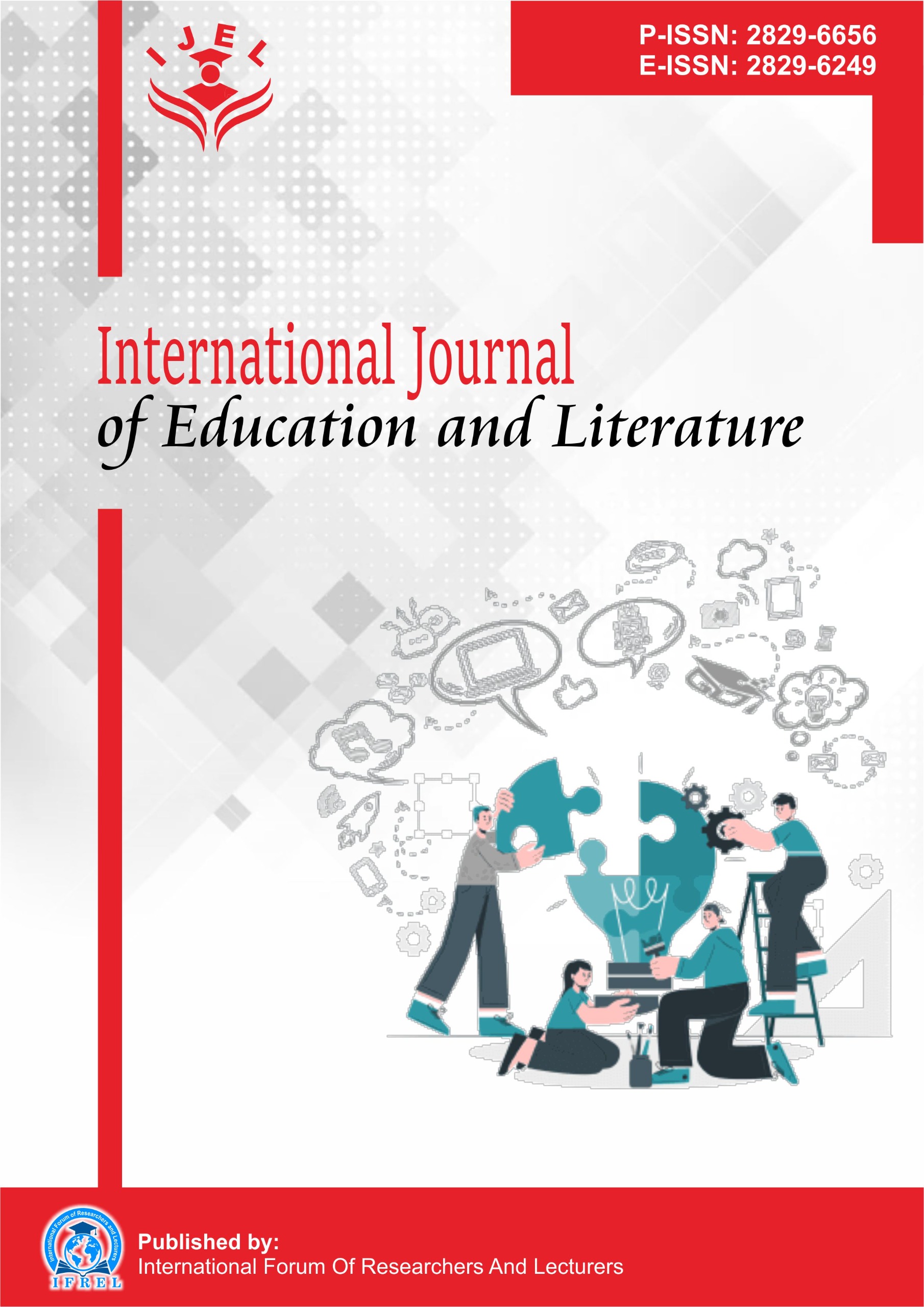Effectiveness of Simple Cooling Devices Based on Fans and Ice to Improve Thermal Comfort in Islamic Boarding School Dormitories
DOI:
https://doi.org/10.55606/ijel.v4i3.278Keywords:
Dormitory, Fan, Ice, Simple Cooling Device, Thermal ComfortAbstract
This study aims to analyze the performance of a simple cooling device based on a fan and ice to improve thermal comfort in the female dormitory rooms of Pondok Pesantren Darunnaja, Bengkulu. The research used an experimental quantitative approach involving temperature and humidity measurements as well as perception data collected through Likert-scale questionnaires. The experiment was conducted in six dormitory rooms measuring 3 × 3 meters. The results indicated that the device was capable of reducing room temperature by approximately 3–5°C and increasing relative humidity to a moderate level. About 70% of respondents reported an improvement in thermal comfort after using the device. Although the cooling effect was not optimal, the fan-and-ice-based system proved effective in creating a more comfortable indoor thermal environment. This simple cooling technology is cost-efficient, energy-saving, and environmentally friendly, making it suitable for application in dormitory or low-cost housing environments.
References
Al-Sanea, S. A., & Zedan, M. F. (2012). Improving thermal performance of building walls by optimizing insulation layer distribution and thickness for same thermal mass. Applied Energy, 88(9), 3113–3124. https://doi.org/10.1016/j.apenergy.2011.11.078
ASHRAE. (2017). Thermal environmental conditions for human occupancy (ASHRAE Standard 55-2017). American Society of Heating, Refrigerating and Air-Conditioning Engineers.
ASHRAE. (2020). ASHRAE handbook: Heating, ventilating, and air-conditioning systems and equipment. American Society of Heating, Refrigerating and Air-Conditioning Engineers.
Baek, N., & Kim, M. (2021). Experimental study on thermal comfort and energy efficiency of portable evaporative cooling systems. Energy and Buildings, 242, 110962. https://doi.org/10.1016/j.enbuild.2021.110962
Budiyanto, S. (2021). Evaluasi sistem pendingin evaporatif untuk ruang hunian di iklim tropis. Jurnal Rekayasa Termal Indonesia, 8(1), 45–54.
Cengel, Y. A., & Boles, M. A. (2015). Thermodynamics: An engineering approach (8th ed.). McGraw-Hill Education.
Cengel, Y. A., & Ghajar, A. J. (2019). Heat and mass transfer: Fundamentals and applications (6th ed.). McGraw-Hill Education.
Chen, H., Yang, J., & Zhou, Y. (2020). Thermal comfort optimization in naturally ventilated buildings. Building and Environment, 170, 106613. https://doi.org/10.1016/j.buildenv.2019.106613
Fanger, P. O. (1970). Thermal comfort: Analysis and applications in environmental engineering. McGraw-Hill.
Fatkhurrohman, M. (2022). Analisis performa pendingin evaporatif portable untuk ruangan asrama. Jurnal Energi dan Sistem Termal, 5(2), 23–30.
Givoni, B. (1998). Climate considerations in building and urban design. Van Nostrand Reinhold.
Hamdan, A., & Rahardjo, E. (2019). Rancang bangun pendingin udara ramah lingkungan berbasis kipas dan air. Jurnal Teknologi Energi, 4(3), 67–74.
Holm, D. (2020). Manual of tropical housing and building: Climate design. Routledge.
Indrawan, R., & Puspita, N. (2022). Analisis pengaruh ventilasi alami terhadap kenyamanan termal di asrama. Jurnal Arsitektur Tropis, 10(2), 145–152.
Iskandar, B., & Sudiadi, S. (2019). Rancang bangun sistem pendingin sederhana sayuran dengan es. Jurnal Teknik Mesin Indonesia, 4(2), 45–52.
Jamaluddin, M. (2018). Prinsip perpindahan panas dan aplikasinya. Jurnal Energi dan Termodinamika, 3(1), 12–18.
Kalsi, E., Purnomo, D., & Rahman, F. (2019). AC portabel tanpa freon sebagai alternatif pendingin udara ramah lingkungan. Jurnal Rekayasa Energi dan Lingkungan, 6(2), 89–96.
Khan, Y. A., & Kumar, S. (2018). Experimental analysis of evaporative cooling for thermal comfort enhancement in residential buildings. Energy and Buildings, 165, 207–216. https://doi.org/10.1016/j.enbuild.2018.01.021
Kindangen, J. L. (2017). Analisis kenyamanan termal dalam bangunan tropis. Jurnal Arsitektur Tropis, 5(3), 101–110.
Lim, T. H., & Chua, K. J. (2016). Energy performance of a hybrid dehumidification–evaporative cooling system. Applied Thermal Engineering, 103, 951–960. https://doi.org/10.1016/j.applthermaleng.2016.04.002
Luo, M., Cao, B., Zhou, X., & Ouyang, Q. (2020). Indoor thermal comfort models: A review and case analysis. Renewable and Sustainable Energy Reviews, 120, 109653. https://doi.org/10.1016/j.rser.2019.109653
Mahmud, M. (2021). Evaluasi kenyamanan termal ruangan pada bangunan pesantren. Jurnal Fisika Terapan Indonesia, 9(1), 15–22.
Marwah, S., & Hidayat, T. (2020). Analisis efektivitas alat pendingin evaporatif terhadap suhu dan kelembapan ruang. Jurnal Teknologi Lingkungan, 6(1), 55–62.
McMullan, R. (2018). Environmental science in building (8th ed.). Palgrave Macmillan.
Megantara, R., & Nurrahman, F. (2023). Optimalisasi alat pendingin sederhana untuk hunian tropis. Jurnal Rekayasa Fisika, 11(1), 12–19.
Olesen, B. W. (2015). International standards for the indoor environment. Indoor Air, 25(4), 357–367. https://doi.org/10.1111/ina.12188
Prasetyo, D., Nugroho, R., & Suryana, T. (2020). Efisiensi sistem pendinginan evaporatif menggunakan es batu pada ruang hunian. Jurnal Energi dan Konservasi, 8(1), 55–63.
Rijal, H. B., & Humphreys, M. A. (2020). Adaptive comfort in Japanese houses during summer. Energy and Buildings, 217, 109972. https://doi.org/10.1016/j.enbuild.2020.109972
Sopian, K., & Alghoul, M. A. (2015). Passive and active evaporative cooling technologies for buildings: A review. Renewable and Sustainable Energy Reviews, 49, 85–99. https://doi.org/10.1016/j.rser.2015.04.009
Sukri, M., Aulia, F., & Rahmat, D. (2021). Studi kenyamanan termal pada bangunan pendidikan di iklim tropis lembab. Jurnal Fisika Terapan Indonesia, 7(2), 33–41.
Sutanto, D., & Arifin, R. (2021). Pengujian sistem pendingin udara berbasis es untuk ruang kelas tropis. Jurnal Energi dan Termodinamika, 7(2), 33–41.
Wijaya, I., & Santoso, A. (2020). Evaluasi kenyamanan termal dan efisiensi energi pada bangunan tropis. Jurnal Teknik Sipil dan Arsitektur, 14(2), 77–86.
Zhang, Y., & Wang, X. (2021). Sustainable cooling technologies: A review of evaporative and radiative systems. Journal of Cleaner Production, 288, 125617. https://doi.org/10.1016/j.jclepro.2020.125617
Downloads
Published
How to Cite
Issue
Section
License
Copyright (c) 2025 International Journal of Education and Literature

This work is licensed under a Creative Commons Attribution-ShareAlike 4.0 International License.







